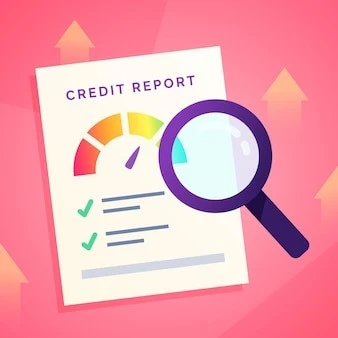The Comprehensive Annual Credit Review (CACR) is a process that publicly traded companies and their lenders conduct annually to evaluate the company’s risk profile and monitor its credit risk. The CACR process is intended to identify and manage risks proactively by providing an in-depth look at a company’s operations, financial performance, management, compliance, and other key attributes.
Together with the quarterly monitoring of loan-level exposures through a Surveillance-Monitoring Report (SEND), these two credit review processes are considered standard operating practices for most lenders today. But given that there are many misconceptions about what a CACR is and how it works, we thought we’d put together this blog post to help you understand exactly what a CACR is, why it matters, what you need to know as an investor or prospective lender, and how you can partner with your lender to establish best practices around the CACR process.
What is a CACR?
A Comprehensive Annual Credit Review is an in-depth review of a borrower’s operations, financial performance, and management that is typically conducted annually by a company’s lenders. The CACR process is intended to identify and manage risks proactively by providing an in-depth look at a company’s operations, financial performance, management, compliance, and other key attributes.
It is a process that publicly traded companies and their lenders conduct annually to evaluate the company’s risk profile and monitor its credit risk. The CACR process is intended to identify and manage risks proactively by providing an in-depth look at a company’s operations, financial performance, management, compliance, and other key attributes.
Why Does a Company Conduct a CACR?
A CACR is conducted by a company’s lenders to evaluate the company’s risk profile and monitor its credit risk. The review process is intended to identify and manage risks proactively by providing an in-depth look at a company’s operations, financial performance, management, compliance, and other key attributes.
A company’s lenders conduct a CACR on each borrower and publish a public report that includes a detailed analysis of the borrower’s operations, financial performance, management, compliance, and other key attributes. This report is made publicly available and is referred to as a CACR report.
The CACR report is important for investors and prospective lenders. It provides a comprehensive view of a company’s financial strength and risk profile, and helps increase transparency around the credit process.
How Is a CACR Report Different From A Normal Credit Review?
The CACR is a comprehensive review that is conducted annually by a company’s lenders, while a normal credit review is conducted by an investment bank on a company that is seeking to raise debt or equity financing.
A CACR process involves a company’s existing lenders (i.e., the company’s committed lenders, not the company’s potential lenders). The CACR process is intended to identify and manage risks proactively by providing an in-depth look at a company’s operations, financial performance, management, compliance, and other key attributes.
5 Things You Should Know About the Comprehensive Annual Credit Review
- The CACR report is intended to give investors and prospective lenders a comprehensive view of a company’s operations, financial performance, management, and compliance. The report includes an analysis of the company’s operations, financial performance, and management, and is intended to help lenders manage risk by providing an in-depth look at a company’s operations, financial performance, management, and compliance. ## Data Accuracy – The data in the report is verified through a variety of tools and methods, including third-party data providers, source company management, and metrics from public financial and regulatory databases.
- The data in the report is verified through a variety of tools and methods, including third-party data providers, source company management, and metrics from public financial and regulatory databases. ## Use of Credit Rating Agencies – At the end of the review process, the CACR report is reviewed by the company’s lenders, who may or may not decide to use a credit rating agency to assign a credit rating to the company.
Key Metrics in the CACR Report –
- The CACR report provides an overview of the following key metrics that help investors and lenders evaluate a company’s risk profile and financial strength: Debt levels: The amount of debt a company has outstanding, including the amount of its outstanding loan and the amount of its cash on hand.
- – The amount of debt a company has outstanding, including the amount of its outstanding loan and the amount of its cash on hand. Interest coverage: A key measure of a company’s ability to meet its debt obligations. – A key measure of a company’s ability to meet its debt obligations. Financial metrics: Key financial ratios that provide insight into a company’s financial health, including its earnings, cash flow, and debt levels.
- – Key financial ratios that provide insight into a company’s financial health, including its earnings, cash flow, and debt levels. Liquidity metrics: Key metrics that gauge the ability of a company to pay off its debt obligations. – Key metrics that gauge the ability of a company to pay off its debt obligations. Credit quality: A qualitative assessment of the creditworthiness of a company and indicates the general level of risk associated with its debt obligations. A company’s lenders may or may not assign a credit rating to the company.
6 Tips to Help You Monitor Loans Through the CACR Process
- Ask your lender to provide you with a copy of the company’s CACR report as soon as it is available. You may also want to reach out to the company to discuss its CACR report and receive a copy of the report from the company.
- Ask your lender to provide you with a copy of the company’s CACR report as soon as it is available. You may also want to reach out to the company to discuss its CACR report and receive a copy of the report from the company.
- Review the company’s CACR report thoroughly and make sure you understand what the report is showing you.
- Review the company’s CACR report thoroughly and make sure you understand what the report is showing you.
- Reach out to the company if you have any questions about the report.
- Reach out to the company if you have any questions about the report.
- Work proactively with your lender to establish best practices around the CACR process.
- Work proactively with your lender to establish best practices around the CACR process.
Why is the CACR process important for lenders?
For lenders, the CACR process is important because it allows them to monitor the overall credit risk of the portfolio and proactively manage risk by identifying issues and taking action to correct them.
The CACR process also allows lenders to gain a deeper understanding of the company’s operations and management, which helps to ensure that the company is operating as efficiently as possible. Therefore, the CACR process is important for lenders because it helps them to manage credit risk, ensure the company is operating efficiently, and gain a deeper understanding of the company’s operations and management.
Why is the CACR process important for investors?
For investors, a CACR process is important because it provides investors with transparency and insight into the credit process and helps increase transparency around the credit process. It allows investors to see how a company is being evaluated and what is being monitored, and provides investors with a comprehensive view of a company’s operations, financial performance, management, and compliance.





10 thoughts on “Comprehensive Annual Credit Review: What You Need to Know”
Obecnie oprogramowanie do zdalnego sterowania jest używane głównie w biurze i oferuje podstawowe funkcje, takie jak zdalne przesyłanie plików i modyfikacja dokumentów.
Can you be more specific about the content of your article? After reading it, I still have some doubts. Hope you can help me.
мк9 на андроид [url=https://apk-smart.com/igry/draki/678-mortal-kombat-9.html]https://apk-smart.com/igry/draki/678-mortal-kombat-9.html[/url] мк9 на андроид
P.S Live ID: K89Io9blWX1UfZWv3ajv
P.S.S [url=https://wowjp.net/forum/17-312542-8#4299018]Программы и игры для Андроид телефона[/url] 277bf90
Thank you for your sharing. I am worried that I lack creative ideas. It is your article that makes me full of hope. Thank you. But, I have a question, can you help me?
Thanks for sharing. I read many of your blog posts, cool, your blog is very good.
310749 449299You produced some decent points there. I looked on-line for any difficulty and located most individuals will go in conjunction with with your internet site. 641455
I know this if off topic but I’m looking into starting my own blog and was wondering what all is required to get setup?
I’m assuming having a blog like yours would cost a pretty penny?
I’m not very web savvy so I’m not 100% sure.
Any suggestions or advice would be greatly appreciated.
Many thanks
[b]Где в Петербурге купить вкусные сладости с доставкой? [/b]
Это как Озон или ВБ только в мире сладкого! [url=https://sladostey.com/]первый в РФ кондитерский маркетплейс[/url]! Это кондитерский маркетплейс, где собраны лучшие мастера и пекарни. От капкейков и макаронс до свадебных тортов и корпоративных наборов — всё в одном месте.
Мы работаем с более чем с 1 400 кондитерами по России и СНГ, поэтому свежесть и качество гарантированы. Доставка по Санкт-Петербургу — прямо в руки, в день заказа или к любой дате.
Закажите сладости онлайн — и пусть праздник начнётся с первого кусочка.
В СПБ
[url=https://sladostey.com/]Sladostey[/url] — выбирайте, заказывайте, наслаждайтесь.
Приветствую, коллеги!
В последнее время часто сталкиваюсь с вопросом, как ускорить рост доходов бизнеса без необходимости масштабных вложений. На самом деле, часто все, что нужно — это сделать несколько правильных шагов, чтобы навести порядок в текущих процессах.
Вот несколько быстрых и простых стратегий, которые можно применить прямо сейчас:
Проверьте свою конверсию на сайте или в магазине. Многие бизнесы теряют деньги на уровне простых, но важных деталей — незаполненные формы, длинные и сложные пути покупки, недостаток привлекательных CTA (призывов к действию). Простая оптимизация этих элементов уже может повысить конверсию на 10-20%.
Анализируйте обратную связь от клиентов. Если у вас есть отзывы — вы уже знаете, что работает, а что нет. Если нет — начните собирать данные прямо сейчас. Простые опросы, форма обратной связи или даже комментарии на соцсетях дадут массу инсайтов о том, как улучшить ваш продукт или услугу.
Используйте ретаргетинг. Если вы уже тратите деньги на рекламу, но не применяете ретаргетинг, вы теряете потенциальных клиентов. Простое напоминание о вашем продукте для тех, кто уже заходил на сайт, может повысить продажи в 2-3 раза.
Проверьте свои цены. Зачастую бизнесы могут упустить момент, когда цены становятся неактуальными. Проверьте, как вы конкурируете с аналогичными предложениями на рынке. Порой небольшое изменение в цене может значительно увеличить интерес клиентов, если вы предложите что-то, чего нет у конкурентов.
Эти шаги не требуют больших бюджетов и могут быть реализованы буквально за несколько часов или дней. Если вам нужно больше идей или хотите прокачать свою маркетинговую стратегию, всегда рад поделиться опытом и предложить помощь.
Меня зовут Георгий и я занимаюсь маркетингом с 2022 года!
[b]Мне можно написать в [url=https://t.me/georgmarketing]тг[/url] ник тот же что и тут.[/b] и я подберу для вас действенное решение)
Давайте вместе двигаться к результату!
Thank you for your sharing. I am worried that I lack creative ideas. It is your article that makes me full of hope. Thank you. But, I have a question, can you help me?